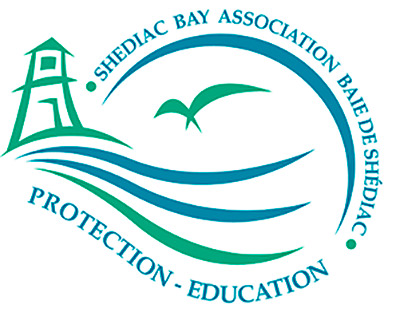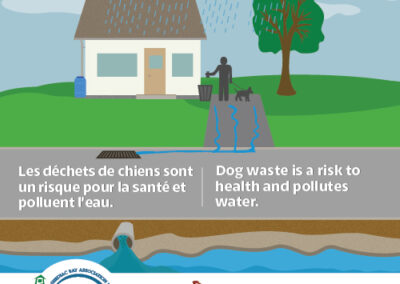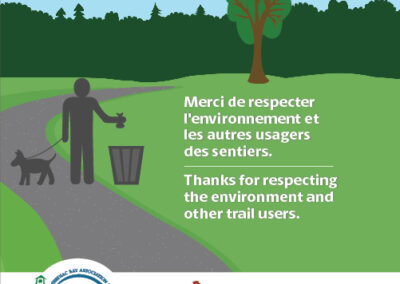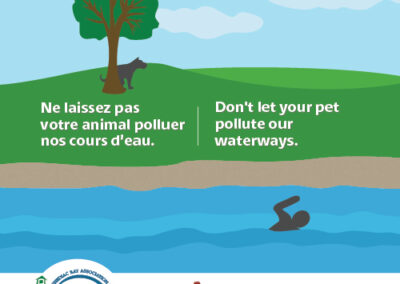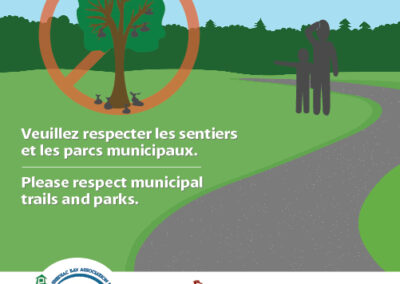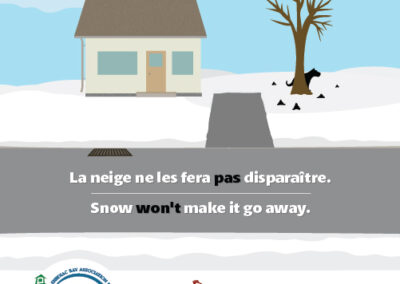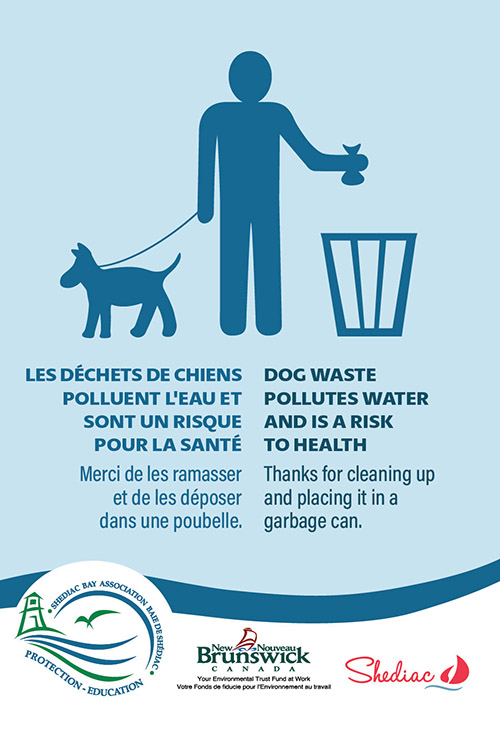Pet Waste
The dog population has been growing steadily in recent years, making pet waste a bigger problem for municipalities. The issue is made worse by the common belief that pet waste is “natural” and therefore not harmful to human health and the environment.
In reality, pet waste is a leading source of excessive nutrients and bacteria. It affects water quality in our local waterways, which sometimes leads to beach closures. By allowing your dog or cat’s waste to accumulate in your yard, contaminants can be carried by rain runoff or snow melt. These contaminants flow into storm drains, streams and eventually into Shediac Bay, making it unsafe for people, fish and other wildlife.
These harmful substances can even seep into groundwater and contaminate wells. Burying, composting or flushing pet waste down the toilet is also not recommended. The safest way to dispose of it is to bag it and put it in a garbage can.
Picking up after your pet, whether in your yard or in public areas, is part of being a responsible pet owner. No one likes stepping into pet waste in our neighbourhoods, urban areas, parks and trails.
Let’s work together to help preserve water quality and prevent our families from being exposed to diseases while swimming or playing outside!
- Never leave dog waste on the ground in public areas, especially on or near a beach.
- Pick up your pet’s waste around your yard several times a week and especially before it rains.
- Do not allow pet waste to accumulate over the winter. When the snow melts in the spring, harmful bacteria will flow into storm drains and waterways.
- Remember to bring poop bags when you walk your dog and dispose of waste in a garbage can.
- Never leave poop bags by the side of the road or in bushes.
- Never put waste in a storm drain as they are not connected to the sanitary sewer and flow directly into our local waterways.
Did you know?
1 – The average dog produces 274 pounds (124 kg) of poop per year! A single gram of dog waste contains approximately 23 million coliform bacteria. It also contains viruses and parasitic worms that can cause disease in pets and humans, especially children.
2 – Pet waste also contains phosphorus and nitrogen, which can lead to an overabundance of nutrients when it flows into waterways. This can result in a loss of oxygen caused by algae blooms, making it difficult for fish and other aquatic life to survive.
Important to know
The Municipality of Shediac has a BY-LAW RELATING TO ANIMAL CONTROL. See sections 4.3 and 4.4 under Responsibilities of Owner regarding picking up animal feces on public or private property.
Follow this link to view.
https://shediac.ca/images/Arreteetannexes6decembre2021.pdf
